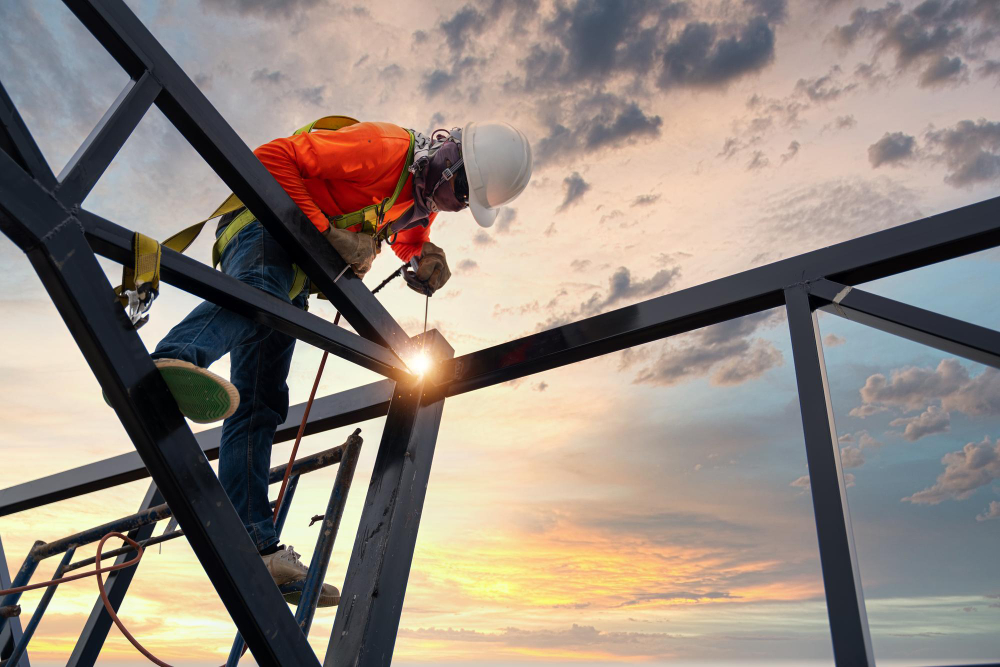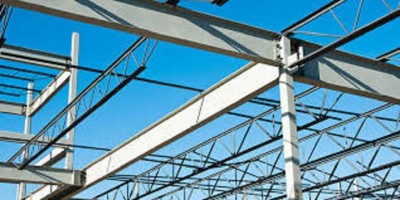Steel Fabrication Melbourne: Craftsmanship Meets Innovation
Steel Fabrication Melbourne: Craftsmanship Meets Innovation
Blog Article
Comprehensive Analysis of Cutting-Edge Techniques in Steel Manufacture Industry
As the steel manufacture market continues to advance, the integration of cutting-edge techniques has actually come to be important for staying affordable and satisfying the demands of modern-day manufacturing criteria. In this vibrant industry where modern technology plays a crucial duty, comprehending the subtleties of these cutting-edge techniques is not simply a choice yet a necessity for those looking to create in advance in the ever-evolving globe of steel manufacture.
Laser Reducing Innovations
In the realm of steel construction, laser cutting developments have changed the precision and efficiency of metal shaping procedures. By harnessing the power of focused laser beams, producers can currently attain exceptional levels of precision when puncturing numerous kinds of steels. This innovation makes it possible for elaborate designs to be performed with marginal material wastefulness, making it a cost-effective remedy for markets needing high accuracy components.
One of the crucial advantages of laser cutting is its ability to manage a large range of products, including stainless steel, light weight aluminum, and carbon steel, with simplicity. The procedure creates tidy, burr-free edges, removing the requirement for additional ending up steps. The non-contact nature of laser cutting minimizes the risk of material contamination, resulting in higher high quality end products.
Furthermore, laser cutting machines can be set to make swift, specific cuts, considerably reducing production time compared to traditional reducing techniques. This speed and precision make laser cutting particularly suitable for automation environments where performance is paramount. As modern technology remains to development, laser cutting is poised to play a progressively crucial function in the steel fabrication market.

CNC Machining Innovations
The advancement of CNC machining innovations has actually ushered in a new period of accuracy and efficiency in the steel fabrication sector. Computer Numerical Control (CNC) equipments have changed steel manufacture by supplying unparalleled precision and repeatability in the manufacturing process. steel fixing. Among the vital developments in CNC machining is the combination of innovative software systems that enable real-time surveillance and changes, bring about boosted productivity and quality assurance
Moreover, the development of multi-axis CNC devices has permitted the fabrication of complicated steel parts with elaborate layouts that were formerly challenging to produce. These makers can carry out a large range of machining operations, consisting of milling, exploration, turning, and grinding, all with high levels of accuracy.
In addition, the unification of automation and robotics in CNC machining has streamlined manufacturing procedures, reduced lead times, and decreased the margin of error. This combination of innovative technologies not only enhances effectiveness but additionally makes certain regular high quality throughout all fabricated steel components. In conclusion, CNC machining advancements continue to drive improvements in the steel construction industry, setting brand-new requirements for precision and efficiency.
Automated Welding Technologies
Automated welding innovations have actually transformed the steel manufacture market, enhancing performance and accuracy in the welding procedure. These innovative technologies utilize computer-controlled systems to automate the welding procedure, bring about higher productivity degrees and improved weld high quality. Among the vital benefits of automated welding is the capacity to perform complicated welds with constant accuracy, decreasing the chance of errors and rework.
Robotic welding systems go to the center of automated welding technologies, offering unparalleled rate steel fixing and accuracy. These systems can take care of a wide variety of welding tasks, from straightforward to elaborate, easily (steel fixing). By using innovative sensing units and software program, robotic welders can adapt to variants in product and joint geometry, making sure an uniform and reputable weld
In addition, automated welding modern technologies improve workplace safety by minimizing the exposure of human welders to unsafe fumes and extreme heat. As the steel fabrication industry remains to evolve, including automated welding innovations will be essential for companies seeking to remain competitive and meet the growing needs for top quality bonded products.
Robotics Integration in Construction
Utilizing robot systems in construction processes has become a crucial approach for enhancing performance and precision in modern-day manufacturing settings. Robotics integration in steel manufacture offers a myriad of benefits, including increased productivity, boosted quality assurance, and enhanced precaution. These advanced robot systems are equipped with innovative sensors and programming capabilities, allowing them to carry out complex jobs with a high degree of accuracy and repeatability.
One of the essential advantages of robotics combination in steel fabrication is the capacity to automate repetitive tasks, such as material handling, cutting, welding, and assembly procedures. This not only quickens manufacturing cycles but also lowers the threat of human error, bring about higher general product quality. Additionally, robotics can operate 24/7, considerably increasing manufacturing outcome and conference limited job deadlines.

3D Printing in Steel Manufacturing
Having revolutionized the steel manufacture sector with robotics integration, the growing exploration of 3D printing in steel production is positioned to more breakthrough the realm of modern production strategies. 3D printing, also referred to as additive manufacturing, provides unmatched design liberty and intricacy, allowing the development of elaborate steel frameworks that were formerly unattainable with standard manufacturing approaches. By using computer-aided style (CAD) software program, manufacturers can precisely regulate the layer-by-layer deposition of steel material, causing get rid of improved capabilities and geometries.
One of the crucial benefits of 3D printing in steel production is its ability to lower material waste substantially. Unlike subtractive production processes where excess material is trimmed away, 3D printing just uses the needed amount of steel required for the last part. This performance not just causes set you back financial savings however also straightens with sustainable manufacturing practices by decreasing environmental impact.
Additionally, 3D printing makes it possible for rapid prototyping and modification, enabling the manufacturing of tiny batches of complex steel components with short preparations. As the technology continues to mature and become more easily accessible, its integration into mainstream steel construction processes is anticipated to drive technology and efficiency across the industry.
Conclusion
To conclude, the steel manufacture market has seen significant developments in methods such as laser cutting, CNC machining, automated welding, robotics combination, and 3D printing. These innovative modern technologies have changed the means steel items are made, causing raised effectiveness, accuracy, and cost-effectiveness. Continued financial investment in these innovative methods is essential for the market to remain competitive and satisfy the needs of modern-day manufacturing processes.
As the steel manufacture industry proceeds to develop, the integration of cutting-edge strategies has actually come to be essential for staying competitive and satisfying the demands of contemporary production requirements.One of the key benefits of laser cutting is its capacity to deal with a vast variety of products, consisting of stainless steel, light weight aluminum, and carbon steel, with convenience.Automated welding modern technologies have changed the steel manufacture sector, enhancing efficiency and accuracy in the welding process.Having actually changed the steel fabrication industry via robotics integration, the growing exploration of 3D printing in steel manufacturing is poised to additional breakthrough the realm of contemporary manufacturing techniques.In conclusion, the steel fabrication industry has seen significant improvements in techniques such as laser cutting, CNC machining, automated welding, robotics integration, and 3D printing.
Report this page